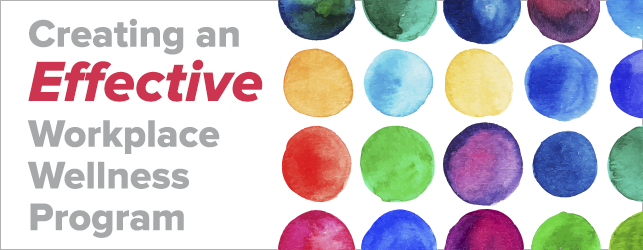 To attract and keep top talent, it’s no secret that leading employers offer a healthy mix of benefits – great pay, ample time-off, opportunities for continuing education, and rewarding culture. And speaking of healthy, companies are investing in the health and wellness of employees now more than ever.
To attract and keep top talent, it’s no secret that leading employers offer a healthy mix of benefits – great pay, ample time-off, opportunities for continuing education, and rewarding culture. And speaking of healthy, companies are investing in the health and wellness of employees now more than ever.
Nearly 68% of employers have some type of wellness program, and there isn’t any wonder as to why. Wellness programs have the power to promote awareness, incentivize positive behavior change, and address rising healthcare costs – it’s a win-win for waistline and bottom-line.
But (and this is a biggie), jumping into these initiatives without proper planning and implementation could set you up for failure. Don’t risk sacrificing program sustainability and precious company morale because you didn’t think it through and vet the plan.
Before launching a wellness program, here are five simple questions to consider:
1. Why do you want to implement a wellness program and what do you want it to achieve?
While this may seem obvious, you’d be surprised at how often this crucial question is overlooked. For many, the go to answer is save money or improve employee health.
While these are undoubtedly the primary outcomes, these shouldn’t be the primary reasons why you’re launching an employee wellness program.
Much like a well thought out mission or vision statement, your program’s purpose should resonate with heart and start with the "why."
This type of purpose will serve you well as a touchstone for every element and metric that determines success along the way.
2. What do your employees know about their own health?
Think of ways you’re currently empowering your employees to take ownership of their own health (and no, putting up a wellness poster in the break room doesn’t cut it). One crucial step toward widespread program adoption is making it personal – really personal.
We’re talking personal health assessments that go beyond biometric screenings. Employees should know their numbers, and not just the one on the scale; glucose levels, cholesterol levels, and more.
A comprehensive blood panel bridges the knowledge gap and highlights a need or next step. Now imagine if you pair that knowledge with a conveniently accessible action plan (hint, hint, your wellness program). That’s supply and demand at work, my friend.
3. What do you know about the aggregate health of your employee population?
Getting an aggregate report on the health of your employee population helps to bring focus to your program efforts and develop strategic support.
Much like the dashboard of a car, this type of report can illuminate which area of your organizational vehicle requires attention. Placing your proverbial eggs in one (non-validated) basket can inhibit you from making major headway in areas that could comprehensively make a measured difference.
Don’t just tackle the low-hanging fruit — reach for right ones the recipe for success calls for.
READ MORE: 3 HABITS OF HIGHLY EFFECTIVE CORPORATE WELLNESS PROGRAMS
4. Do you have relevant incentives associated with your plan?
From gift cards and grand prizes, to discounts and penalties, there’s a bevvy of options employers can choose from when it comes to wellness program incentives.
According to a recent survey from Fidelity Investments and the National Business Group on Health, nearly 90% of employers offer incentives to employees who work toward getting healthier - up from 57% of companies in 2009.
The key is to pair a proportional reward or penalty to the desired wellness initiative or program.
Just make sure it’s legal and doesn’t markedly exclude employees from engaging in alternatives if they cannot physically meet incentive requirements.
5. Do you have leadership buy-in?
The best programs put the mission of wellness on "surround sound" — this means that every aspect of the organization, from the built environment to leadership messaging, lives and breathes wellness. But it can only happen with clear leadership buy-in.
For Safeway, intentionally tying wellness to overall corporate strategy gave priority to capital investments that paved the way to tangible evidence of their renewed mission (preventative-care health center, state-of-the-art fitness center, and health-conscious cafeterias with nutritious meal offerings). The creation of a seamless wellness experience resulted in over 80% employee participation and an enviable culture of wellness.
You may not exactly be going over the blueprints of the next state-of-the art fitness facility for your employees, but there are lucrative lessons that can be creatively scaled to the size of your organization and budget.
Conclusion
Whether you’re launching your first employee wellness program, or you’ve been in the game for a while, it’s never too early to think and dream big about helping to improve the life of employees.
By answering these questions, you’ll be off to a great start in identifying and establishing a wellness program that you and your employees can be passionate about.


 Posted by
Posted by


